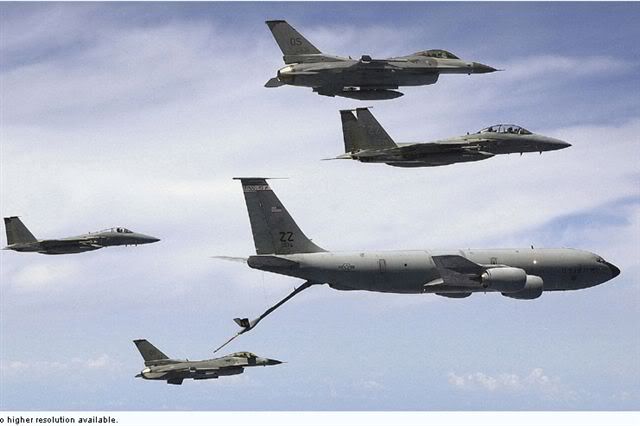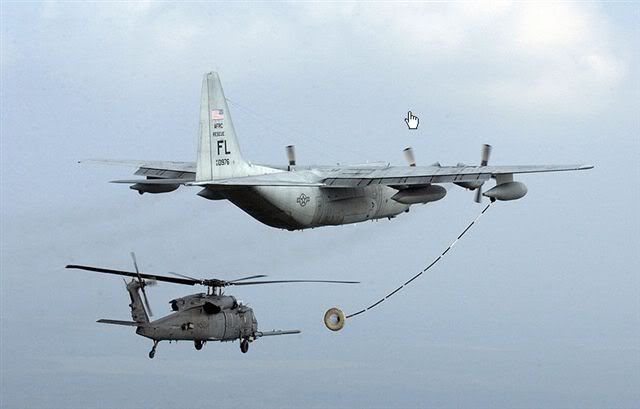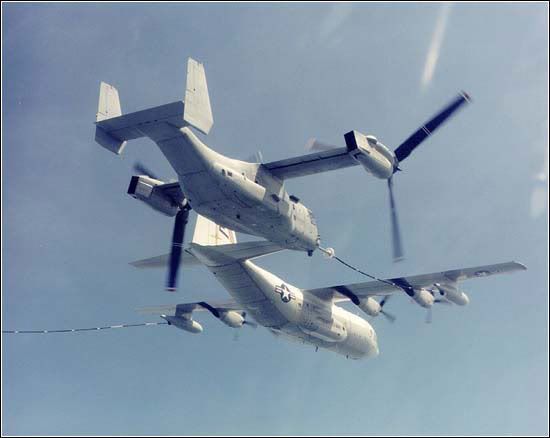In this first photo you see a KC-135R refuelling F-15s and F-16s. Difficult enough to master and a lot of training needed.

But take a look at the photo of a KC-130 P refuelling a HH-60 Pave Hawk.
What comes immediately to mind is the latent danger of the rotary wing tangling with the fuel hose and then one big disaster. I think that a lot of care and training would have to be put into this manoeuvre

By the way, that isn't the hand of God in the sky, but it might well be....lol
Now refuelling a V-22 Osprey, looks like another matter, but "Air-to-air refuelling is an easy task, in the V-22," said Marine Corps Lt. Col. Kevin Gross, one of the Osprey test pilots. "The aircraft demonstrates positive and predictable characteristics in all axes but especially in the thrust axis where the pilot's ability to control closure rates is important."


